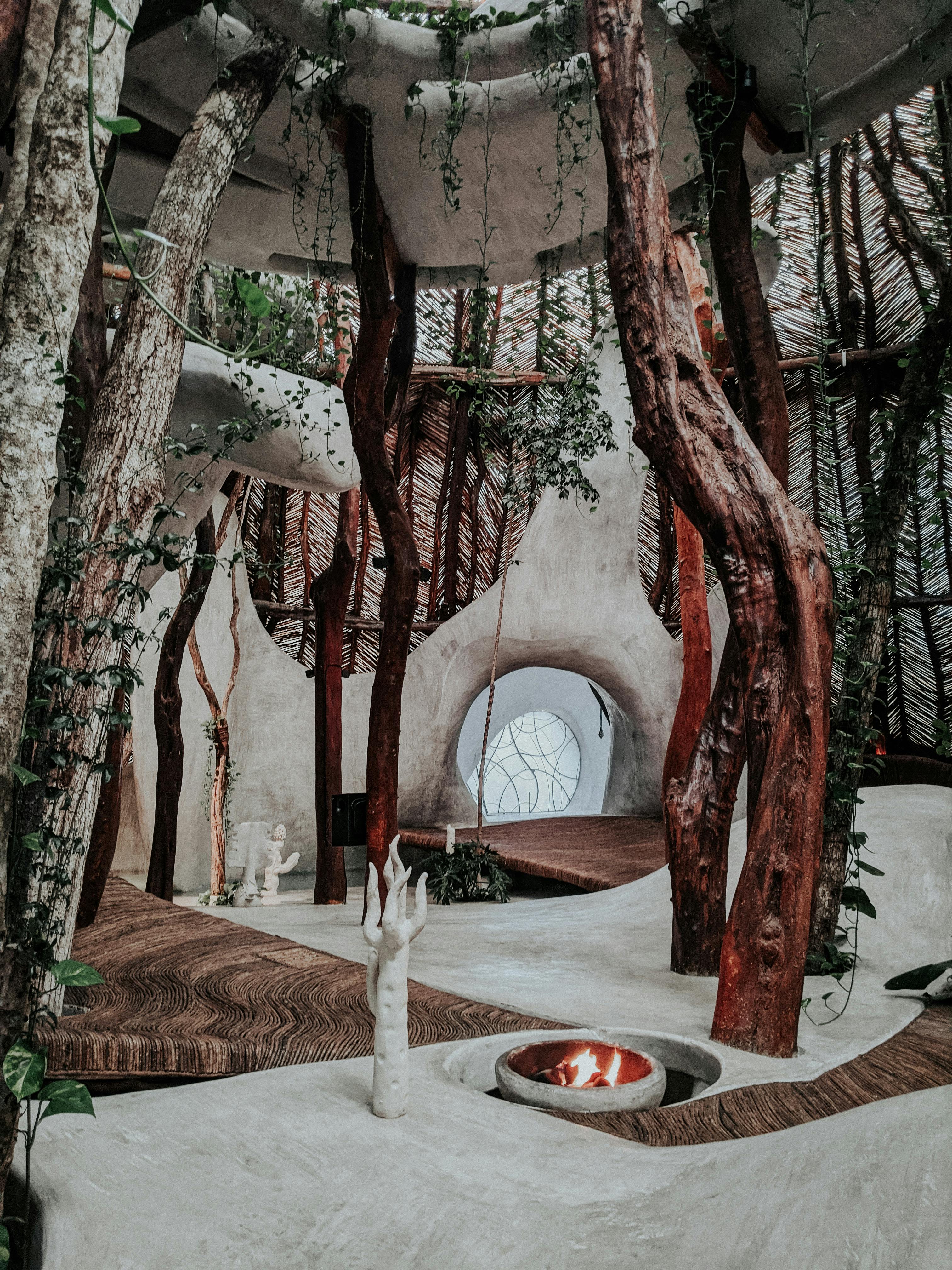Bonsai Brutalism: The Fusion of Miniature Trees and Raw Architecture
Imagine a world where the delicate art of bonsai meets the bold, unapologetic lines of brutalist architecture. This unexpected marriage of opposites is taking the design world by storm, challenging our perceptions of both nature and structure. Welcome to the realm of Bonsai Brutalism, where tiny trees find their home amidst concrete and steel, creating a captivating juxtaposition that's redefining interior aesthetics.

The origins of this trend can be traced back to the intersection of two distinct cultural phenomena. Bonsai, with its centuries-old tradition of cultivating miniature trees, represents patience, harmony, and the beauty of nature in microcosm. Brutalism, on the other hand, emerged in the mid-20th century as an architectural style characterized by exposed concrete, geometric shapes, and a celebration of raw materials. By combining these seemingly disparate elements, Bonsai Brutalism creates a unique aesthetic that speaks to both our desire for natural beauty and our fascination with industrial design.
The Aesthetics of Contradiction
At the heart of Bonsai Brutalism lies a powerful visual paradox. The delicate, organic forms of bonsai trees stand in stark contrast to the bold, angular lines of brutalist-inspired containers and surroundings. This juxtaposition creates a tension that draws the eye and challenges our perceptions of scale, texture, and form.
Designers embracing this trend often use materials like concrete, steel, and glass to create custom planters and display stands for bonsai trees. These structures may feature sharp angles, exposed aggregate, or deliberately rough surfaces that echo the principles of brutalist architecture. The bonsai trees themselves become living sculptures, their gnarled trunks and carefully pruned branches offering a soft counterpoint to the harsh geometry of their surroundings.
Color plays a crucial role in Bonsai Brutalism as well. The muted greens and browns of the bonsai foliage are set against the cool grays and whites of concrete, creating a palette that is both soothing and dramatic. Occasionally, designers introduce pops of color through carefully chosen accent pieces or by incorporating colorful minerals into the concrete mix, adding depth and visual interest to the overall composition.
Practical Considerations for Bonsai Brutalism
While Bonsai Brutalism offers a striking aesthetic, it also presents unique challenges for both designers and plant enthusiasts. The harsh, porous nature of concrete can be problematic for bonsai cultivation, requiring careful consideration of drainage, pH levels, and moisture retention. Designers often collaborate with bonsai experts to create custom soil mixes and incorporate hidden reservoirs or irrigation systems into their brutalist-inspired planters.
Lighting is another critical factor in successfully implementing Bonsai Brutalism in interior spaces. Many brutalist-inspired interiors feature large windows or skylights, which can provide the necessary sunlight for bonsai trees to thrive. In spaces with limited natural light, designers may incorporate specialized grow lights into their brutalist structures, seamlessly blending functionality with form.
Maintenance of Bonsai Brutalism installations requires a delicate balance between horticultural care and preserving the aesthetic integrity of the brutalist elements. Homeowners and designers must be prepared to invest time in pruning, watering, and shaping the bonsai trees while also maintaining the raw beauty of the concrete and metal components.
The Cultural Impact of Bonsai Brutalism
As Bonsai Brutalism gains traction in the design world, its influence is extending beyond residential interiors. High-end hotels, restaurants, and corporate offices are incorporating elements of this trend to create memorable, Instagram-worthy spaces that resonate with a design-savvy clientele.
The trend has also sparked renewed interest in both bonsai cultivation and brutalist architecture among younger generations. Social media platforms like Instagram and Pinterest are awash with images of Bonsai Brutalism installations, inspiring DIY enthusiasts to experiment with their own creations. This has led to a surge in demand for bonsai workshops and a resurgence of interest in mid-century brutalist design principles.
Moreover, Bonsai Brutalism is fostering interesting conversations about the relationship between nature and urban environments. By bringing these two seemingly opposed elements together, designers are encouraging people to reconsider their assumptions about what constitutes beauty in both the natural and built worlds.
The Future of Bonsai Brutalism
As with any emerging trend, the question arises: Is Bonsai Brutalism here to stay, or is it a passing fad? While it’s difficult to predict the longevity of any design movement, the principles underlying Bonsai Brutalism – the interplay between organic and inorganic, the celebration of raw materials, and the desire to bring nature into urban spaces – suggest that this trend has the potential for lasting impact.
Looking ahead, we can expect to see further innovations in materials and techniques as designers push the boundaries of what’s possible with Bonsai Brutalism. 3D-printed concrete planters, living walls incorporating brutalist elements, and large-scale public installations are just a few of the exciting possibilities on the horizon.
As our cities become increasingly dense and our connection to nature more tenuous, Bonsai Brutalism offers a compelling vision for how we might reconcile our urban existence with our innate need for natural beauty. By embracing this bold fusion of ancient art and modern architecture, we open ourselves to new ways of seeing and experiencing the world around us, one miniature tree at a time.





